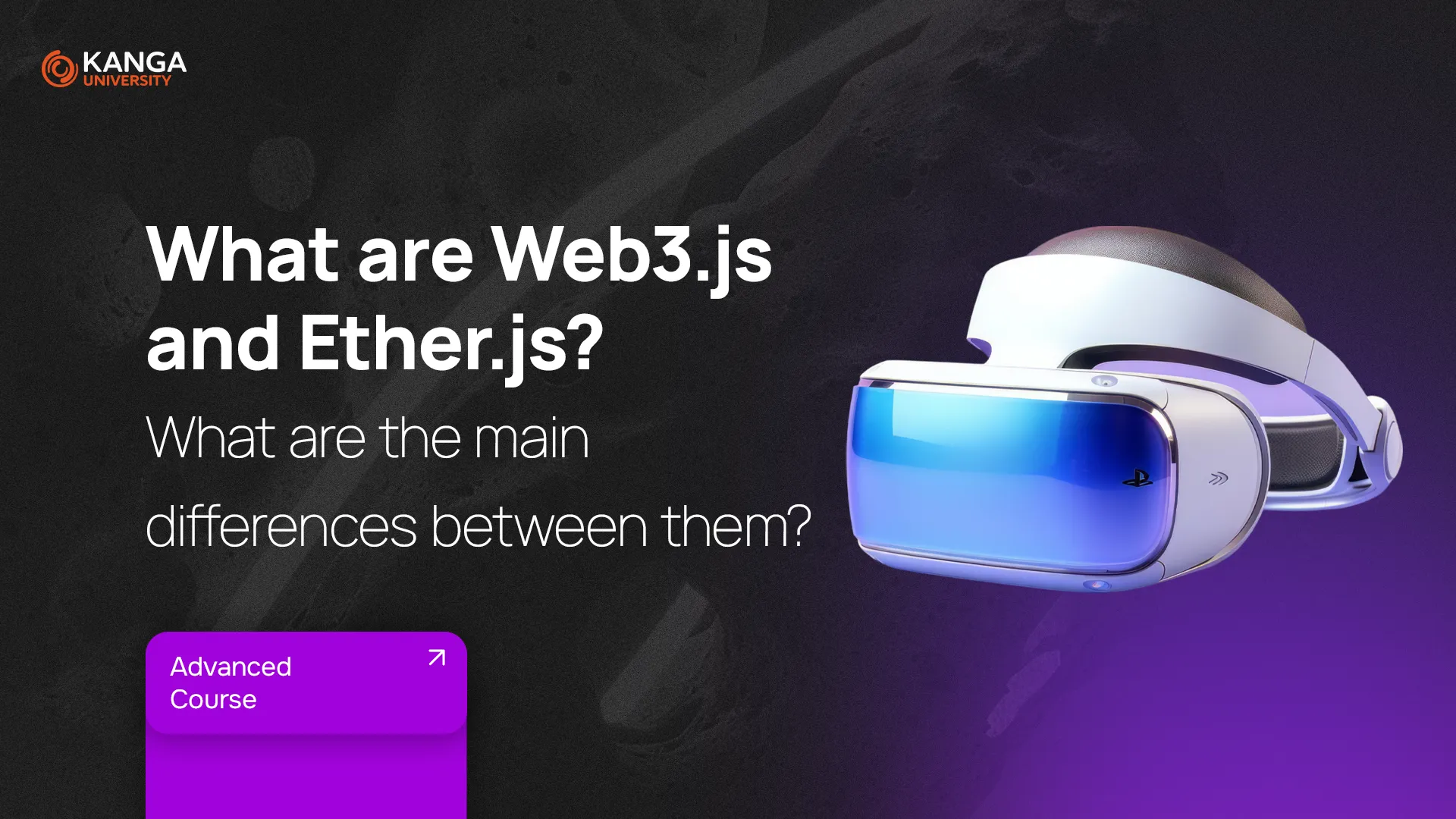
If you want to build a website that interacts with the Ethereum blockchain, your first step is choosing the right tool to connect your app to the network. In the crypto space, two libraries dominate this role: Web3.js and Ether.js.
Both let your website “talk” to Ethereum — but they do it in different ways and are suited for different types of projects. In this lesson, you’ll learn how they work, what sets them apart, and when to choose one over the other.
What Is Web3.js?
Web3.js is a JavaScript library that makes it easy to connect your website or app to the Ethereum blockchain. With Web3.js, you can:
-
Send and track Ethereum transactions,
-
Interact with smart contracts,
-
Read and write data to the blockchain,
-
Deploy and manage your own contracts.
It’s open-source, widely used, and trusted by major companies like Microsoft and IBM.
Web3.js is often the go-to tool for beginners. It has a large user base, a ton of tutorials, and a friendly community — making it easy to get started with building decentralized apps (dApps).
What Is Ether.js?
Ether.js is another JavaScript library that interacts with the Ethereum blockchain. But it’s built with a more modern approach — it’s lighter, more secure, and often preferred by developers creating advanced dApps.
Originally launched as ethers.io, Ether.js evolved into a full-featured, clean, and flexible library for Ethereum-based development.
Key features of Ether.js:
-
Secure handling of private keys,
-
Import/export wallets in JSON format,
-
Supports mnemonic phrases in multiple languages,
-
Connects to Ethereum via services like INFURA, Alchemy, MetaMask, Cloudflare, or directly via JSON-RPC,
-
Works seamlessly with TypeScript,
-
Minimal file size (great for fast web apps),
-
Fully open-source under the MIT license.
Ether.js is a developer-friendly, performance-focused tool designed for building powerful Ethereum apps.
Web3.js vs Ether.js: Key Differences
| Feature | Web3.js | Ether.js |
|---|---|---|
| Popularity | Older and widely used | Gaining popularity with advanced devs |
| Documentation | Good, but slightly outdated | Modern, clear, and concise |
| Community support | Large and active | Smaller but growing fast |
| File size | Heavier | Lightweight |
| TypeScript support | Limited | Fully integrated |
| Private key handling | Requires extra setup | Built-in and secure |
| Compatibility | General-purpose | Ethereum-focused |
When Should You Use Each One?
Use Web3.js if:
-
You’re just starting with Ethereum development,
-
You want quick access to example projects and help,
-
You’re building a basic dApp or token tool.
Use Ether.js if:
-
You care about speed, security, and clean code,
-
You’re working in TypeScript,
-
You’re building a DeFi app, wallet, or exchange,
-
You want more control over transactions and key management.
Real-World Use Cases
Web3.js is widely used for:
-
Launching dApps and NFT platforms,
-
Managing smart contracts and tokens,
-
Handling token sales (ICOs, IDOs),
-
Building DAO tools.
Ether.js is commonly chosen for:
-
Crypto wallets,
-
Decentralized exchanges,
-
Custom DeFi dashboards,
-
High-performance Ethereum apps.
Summary
There’s no one-size-fits-all answer — the right tool depends on your goals and skill level.
-
Web3.js is a great starting point. It’s user-friendly, well-known, and easy to integrate.
-
Ether.js is more advanced. It’s lightweight, modern, and ideal for building secure, scalable apps in the Ethereum ecosystem.
Many professional developers use both depending on the project. If you’re serious about Ethereum development, you’ll likely end up learning and using both over time.